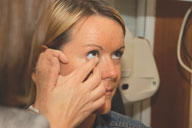 The majority of optical outlets consider themselves to be healthcare providers, but operate in a retail environment. This can cause confusion, not just for practice personnel, but for consumers as well.
The majority of optical outlets consider themselves to be healthcare providers, but operate in a retail environment. This can cause confusion, not just for practice personnel, but for consumers as well.
The traditional optical practice model includes the provision of professional care, linked to the supply of spectacles or contact lenses – with the product-related profit including an element to subsidise the cost of professional time. Yet other professions, such as lawyers, veterinary surgeons and accountants, are able to charge more realistically for their time.
The key factor differentiating many optical practices is service and professional care. This means that most consumers will not consider changing from one practice to another, unless they are disappointed by poor service. Considering this traditional model, it is no wonder many practices reconsidered actively promoting contact lenses, when other outlet channels were offering the same branded lenses for a fraction of the price. However, what was being offered were contact lenses at low margins often without the aftercare, service and support that were included by the traditional optical practice.
Register now to continue reading
Thank you for visiting Optician Online. Register now to access up to 10 news and opinion articles a month.
Register
Already have an account? Sign in here
